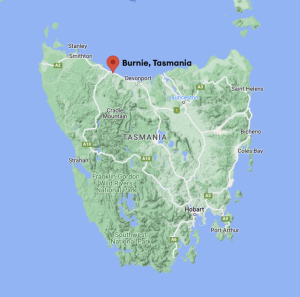Author, Al Whittle & James Fitzpatrick
Even before COVID-19, Australian aged care providers were in a vulnerable position. The Interim Report of the Royal Commission into Aged Care released in October 2019 identified industry-wide failure. Titled ‘Neglect’, the report’s title aptly summarises many of its conclusions.
The COVID-19 pandemic has amplified the systemic problems the report raised as evidenced by government intervention in outbreak-stricken facilities such as Newmarch House. It’s likely that heavier scrutiny will shine a light on more issues as this current crisis subsides.
Last month the aged care industry took decisive measures to help slow transmission by locking down facilities to external visitors. That substantial effort has meant aged care fatalities in Australia are relatively low compared to Europe where over half of all COVID-19 related fatalities are connected to the aged care industry.
At times, these efforts have been overshadowed by criticism of some aged care providers for a ‘lack of communication’ leading to enduring media focus on the industry. This coverage has been peppered with emotional tales of sons and daughters unable to visit loved ones. In at least one case, family members were unable to support their elderly parents as they passed away.
Scrutiny from the media and regulators will be ongoing and so it is critical that providers navigate the next stage of this crisis with strong, consistent, and empathetic communications – keeping their stakeholders informed of every step of their response.
This article sets out three key elements critical to a successful crisis communication strategy during a pandemic. While these have been adapted for aged-care, these tips are relevant to most industries:
1. Establish the facts and your strategy
Your communications strategy needs to deal in facts and reject assumptions to ensure you’re responding to the right problem. The first mistake we have seen organisations make in their response have been panicked attempts to fix the problem without validated facts and a well thought-out strategy.
For example: in April, Chief Medical Officer Dr Brendan Murphy heard a rumour about a dinner party hosted by healthcare workers in Tasmania which violated physical distancing restrictions. The next day he reported it to a New Zealand parliamentary committee and connected it to a large outbreak in Burnie which shut down two hospitals and caused 5,000 Tasmanians to be placed in quarantine. Dr Murphy told his NZ equivalents, “we thought we were doing really well in the last week and then we had a cluster of 49 cases… most of them went to an illegal dinner party of medical workers”. A police investigation concluded that Murphy was reporting on a rumour.
The subsequent media frenzy infuriated the public, sidelined opposition politicians trying to be bipartisan and dampened Murphy’s credibility. All of this was avoidable.

Burnie, Tasmania Where the alleged party happened
We recommend you start your response by establishing and maintaining a register that distinguishes facts from assumptions. Visualise the information you’re certain of and the assumptions you still need to confirm.
With the facts at hand you can set out your strategy. Before considering tactics, it’s important to answer the following questions simply and honestly:
- What’s at stake here? What are the potential consequences to different areas of our business – and most importantly – to our people inside and outside our organisation?
- What are our objectives in responding to this?
- Who are our priority stakeholders and what is important to them right now? How can we help them and put their needs at the centre of what we do next?
- How will we talk to our stakeholders – and most importantly – hear what they have to say?
Answers to these questions should then influence the strategic communications tactics you use to respond, which channels you choose to engage with and what your core messages will be.
2. Keep it simple
Your stakeholders will inevitably be very different groups and you will need to communicate in a way that everyone understands. The release of the industry-approved Visitor Access Code is a welcome consolidation of visitation policies and woven into your messaging it will help your stakeholders feel in control of their situation. This is best done by keeping your messaging simple.
Since the pandemic began there have been numerous sources all collectively releasing overwhelming amounts of information. Your stakeholders will be consuming as much of it as they can and it will be difficult for them to sift through and find the truth and what it means for them right now.
Simple communications will cut through the forest of material from the countless streams of other information. We suggest following a model similar to:
- Empathise: Start with empathy and focus on your audience – not yourself
- Establish facts: What is the current knowledge you have?
- Explain response: Reassure your stakeholders that you’re managing the situation and tell them how you’re doing it
- Indicate the next steps: Explain what this means for your audience and what they should do next. This will help your audience feel in control of their situation.
Following this simple model makes it easy for your stakeholders to efficiently get up to speed with what’s going on and importantly, for the aged care industry, how loved ones can see your clients. You will have told them what your decisions mean for them and with regular use, your stakeholders will find comfort in the consistency and certainty in your messaging.
3. Keep it nimble
One of the most challenging characteristics of a pandemic is that the situation evolves and changes shape daily. What might be true today may be totally incorrect tomorrow. This means that you need to be ready, willing and able to evolve or pivot your response quickly. You will likely need to update those four key points regularly depending on the stakeholder group and their needs.
In Sydney, Moran Engadine Aged Care experienced the positive impacts of a nimble communications strategy the day after the centre’s first positive diagnosis. On March 17, 19 staff were quarantined due to contact with the diagnosed patient, and the next day a further 21 called in sick to work. The centre’s General Manager Mary Gibbs told the Aged Care Guide, “panic and fear had gone through the staff”.
In this case, nimble communications meant responding to the diagnosis in a way that comforted residents and families as well as reassuring staff that their workplace was safe to attend. A statement regarding closure to visitors was released the same day and reaffirmed the day after on its Facebook page. In the months since, Moran Aged Care has published stories interviewing residents about their experiences of COVID-19 alongside pieces praising staff for their efforts, with room for residents and their families to leave affirmative comments.

While Moran Engadine Aged Care uses a hashtag system to arrange posts on its website by theme, we recommend establishing a specific page on your website dedicated to this crisis. It’s good to connect with your stakeholders on the channels they like to use (i.e. social media, emails, etc.) but it should always direct back to your one source of truth. A specific page allows members of different stakeholder groups to grasp the relevant information easily.
The Aged Care industry’s troubled reputation will be hard to shake. In crisis, the guiding principle of any communications response should be to do best by your stakeholders. With that in action, surviving with your reputation can follow.
At Banksia Strategic Partners, we are guiding many of our clients through the crisis communication process for COVID-19. The truth is, there is no silver bullet that solves the challenges most industries are facing right now. But a well thought out strategy grounded in facts, and a capacity to take in new information and communicate it clearly and calmly, are the essential building blocks that should help you find a way to hold on and begin your rebuild.
If you’re interested in what this might look like for your organisation or just keen to talk through some of the ideas set out above, don’t hesitate to get in touch.
—
James Fitzpatrick is a Senior Associate at Banksia with experience steeped in crisis management, having worked on high-profile crisis response projects during royal commissions, terrorist attacks, natural disasters, and media scandals.
Al Whittle is an Executive Officer at Banksia with a wealth of experience in strategic communications and has worked with a range of higher education, energy, resources, sport and entertainment sectors across private and political consulting sectors.


